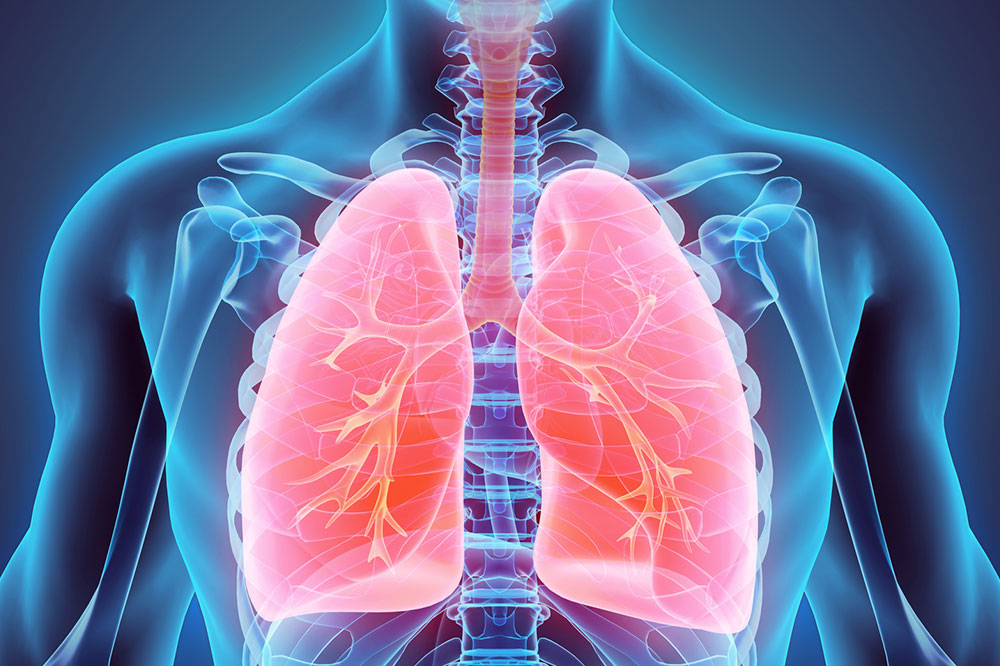4 Common Treatment Options for Lung Cancer
An uncontrolled growth of abnormal cells in one or both lungs is considered as lung cancer. Neither do these abnormal cells carry out the normal functions of lung cells nor do they develop into a healthy lung tissue. These abnormal cancer cells tend to form tumors and interfere with the basic functioning of the lungs, which is to provide oxygen to the body through the bloodstream.
The two main types of lung cancer are small cell lung cancer (SCLC) and non-small cell lung cancer (NSCLC).

Surgery
Surgery is one of the most common ways of treating lung cancer, especially, when the patient is in his early stages. In this lung cancer treatment, a section or lobe of the lung that contains the tumor is removed by the surgeon. Some surgeons conduct the surgery using video-assisted thoracoscopic surgery (VATS). The surgeon inserts a tube called a thoracoscope for the surgery procedure by making a small incision in the chest. The thoracoscope has a light with a tiny camera that is connected to a video monitor so that the surgeon can see inside the chest. This helps the surgeon to remove a lung lobe through the scope without making a large incision in the chest. Some of the key advantages of a surgical procedure for curing lung cancer are that it improves the speed of recovery, allows any other lung cancer treatment to resume faster, the pain is less compared to other treatments while recovering, and surgery helps a patient resume back to normal activities quicker as compared to other treatment options.
Chemotherapy and radiation
In some patients, lung cancer treatment begins with chemotherapy; this treatment option for lung cancer helps shrink the tumor and makes it easy to remove later by surgery or radiation. When chemotherapy is conducted before radiation or surgery for treating lung cancer, it is known as a neoadjuvant treatment. With a combination of medicines, chemotherapy helps in increasing the effectiveness of radiation therapy to destroy hidden cells of cancer. If the tumor fails to shrink with chemotherapy, the medicines are stopped right away by the doctor and an alternative lung cancer treatment is introduced. Many studies indicate that people are able to cope with the side-effects of chemotherapy when it is conducted before surgery.
Chemotherapy that is used as a form of lung cancer treatment after surgery is known as adjuvant chemotherapy. This form of lung cancer treatment is usually introduced after the tumor is surgically removed with the aim of preventing the cancer from returning. Usually, for people who are suffering from stage III lung cancer, the cancer cannot be removed surgically. In such cases, doctors recommend a combination of chemotherapy with a high-dose radiation treatment. Usually, chemotherapy is used as the main lung cancer treatment option in stage IV. Radiation is used only for the palliation of symptoms of the same in stage IV. In many cases, however, chemotherapy and radiation prove to be ineffective in lung cancer treatment and after a while, the cancer may return as well. In such cases, the doctors opt for a second-line chemotherapy which consists of prescribing a second course of drug treatment for lung cancer treatment.
In more than half the people diagnosed with small lung cancer, the cancer can spread to the brain as well. In most cases, people who are diagnosed with small cell lung cancer, chemotherapy is a key part of the treatment. For patients with lung cancer who responded well to chemotherapy treatment, the doctor may further advise radiation therapy to prevent the cancer from spreading to the brain. This procedure that is conducted to prevent the lung cancer from spreading to the brain is known as prophylactic cranial irradiation (PCI).
Targeted therapy
One of the best lung cancer treatments that have been introduced is targeted therapy. Target therapies are specifically designed to attack cancer cells, unlike chemotherapy drugs that attack both the cancer and healthy cells in the targeted area. Targeted therapies attack the cancer cells specifically by attaching or blocking targets that appear on the surface of these cells. People who are diagnosed with advanced lung cancer with certain biomarkers may receive a lung cancer treatment that comprises targeted therapy alone or targeted therapy combined with chemotherapy.
Immunotherapy
Immunotherapy is one of the more recent treatment options for lung cancer. While most cancer treatments do cause certain side-effects, immunotherapy is usually a well-tolerated treatment. The immune system of a human body is constantly at work to keep the body healthy, it recognizes dangers like bacteria, viruses, and even growing cancer cells. In immunotherapy, the human’s body immune system is used to fight against cancer.




